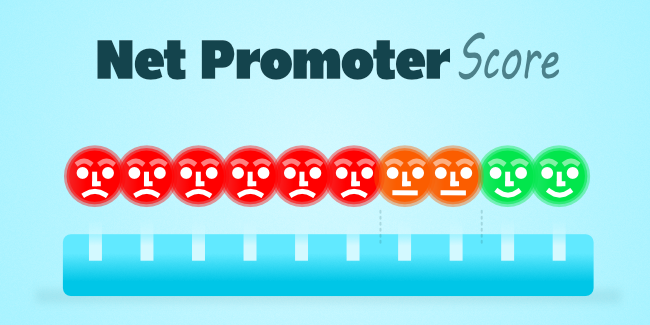What is market research?

Market research is the process or activity of gathering information on the market's demands and preferences. Every element of a company - from branding to product to customer service to marketing and sales - is impacted by market research. You can take actions to satisfy your audience's needs and reduce the risk of an experience gap, which is what they expect you to give versus what you provide if you understand how they feel and act.
Types of Market Research
Primary Market Research
Primary market research is an approach that involves contacting the end users or hiring a third party to do relevant studies to gather data. The data might be qualitative (non-numerical) or quantitative (numerical or statistical).
While doing primary market research, you may gather two sorts of data: Exploratory and Specific. Exploratory study is an open-ended inquiry in which a problem is investigated by asking open-ended questions during a comprehensive interview style, usually with a small group of individuals known as a sample size of 6-10 people. On the other hand, targeted research is more focused and is used to solve issues that emerge from exploratory research. Primary market research is made up of both qualitative and quantitative market research. Qualitative study involves semi-structured or unstructured data gathered using a variety of qualitative research approaches, such as:
Focus groups: The Focus Group technique is one of the most popular qualitative research strategies. A focus group is a small group of individuals (6-10) who respond to online questionnaires delivered to them. The appeal of focus groups is that information may be gathered remotely and without face-to-face contact with the members.
One-to-one interview: In this approach, the researcher meets with respondents in person to obtain information or data. The questions are generally open-ended and asked in a manner that encourages responses. This technique is highly reliant on the interviewer's skill and experience in asking inquiries that elicit answers.
Ethnographic research: In-depth study is conducted in respondents' natural settings. This approach necessitates the interviewer to adapt him/herself to the respondents' natural environment, which might be a city or a rural area. Geographical limitations may be a limitation when performing ethnographic research. Ethnographic studies can take anything from a few days to several years to complete.

Organizations utilize qualitative research approaches, such as online surveys, questionnaires, and polls, to obtain statistical insights in order to make educated decisions. The simplest and quickest technique to gather data is to employ a well-structured mechanism. With all of the data that is accessible right away, necessary action may be taken based on what was learned.
Secondary Market Research
Secondary research is an information-gathering technique that gathers data from a variety of outside sources such as government agencies, the media, trade organizations, and so on. Newspapers, periodicals, books, company websites, free government and nongovernment institutions are all examples of secondary sources. The following are examples of secondary source material: Public sources, commercial sources and educational Institutions.
Qualitative research
Qualitative market research is the collection of non-numerical primary or secondary data. As a result, this type of research is difficult to measure. The reason why researchers do this sort of study is that it can provide more depth to the data.
This sort of market research is intended to summarize and infer, rather than pinpoint an exact truth among a target market's consumers. Qualitative market research may be used to discover how a new product affects a new target market, and then translate the response into a clear description for the company.
Quantitative research
Quantitative research, as the name implies, is the study of data that is numerical in nature and can be collected more conveniently. Market research of this sort is conducted since it may provide historical benchmarking based on evidence. There are various methods to get this information, including polls, surveys, desk research, internet statistics, and financial documents. These might be exploratory in nature without being extensive at this point. This type of market research may provide the basis for further study by researchers by conducting qualitative market research. The following four categories of market research are tailored to certain themes, which provide distinct knowledge.
Branding research
The importance of brand research in the marketing process cannot be overstated. Brand research helps a firm to build, manage, and preserve its brand. This might include the company's tone, branding, photos, values, or identity. Interviews, focus groups, and surveys are all useful ways to conduct research. Brand awareness questionnaires, for example, will inquire about your participants' knowledge of the brand and whether they would be interested in purchasing it.
Brand research is also useful for evaluating current brand performance, assessing client preferences in terms of product and price, understanding internal processes involved in creating a brand, analyzing relationships between brands and competitors to gain insights into the value chain , and conducting market surveys.
The goal of this study is to figure out how to tell whether: Your company's brand is performing in comparison with other competitors. There are areas where you can make improvements to your brand activities. It's time to show some accomplishments in order to enhance your brand's reputation.
Customer research
Customer market research looks at the important factors influencing your target consumers and how your firm may tailor its services to increase sales. The purpose of this study is to get to know your client on a personal level and stay up with how they interact with the business. The following are some of the themes covered in this research: Customer satisfaction, customer loyalty, customer segmentation research.

Customer satisfaction surveys, NPS (net promoter score) and interviews at the conclusion of support calls can also provide more information.
Competitor research
Competitor analysis is the process of learning who your competition is and how they compare to your business, in order to stay ahead. It might cover issues such as how to enter a new market or what competitors are offering in the market.
The goal of this study is to figure out how to make your company stand out and future planning through horizon scanning and listening to customer demands.
In-depth analysis of online reviews can help you understand where to improve and find innovative app ideas. Primary research might look at consumer purchasing patterns, while secondary sources might examine market dominance, sales, organizational structure, and so on. With this comprehensive study, you'll be able to determine where you can improve in order to be more competitive and seek for creative
Product/service use research
Analysis of the product or service's usage can tell you how and why your customers use your stuff, as well as specifics of that item. This sort of consumer research also gives you an indication of the item's usability for your target audience.
Market research is an essential approach to verify that your items and services are ready for market and performing as well as possible. The objective of this study is to discover how your product is evaluated by consumers, if customers are providing value and whether it is functioning correctly. Ideas for improvements and future product development can also be generated.
In this kind of market research, primary study techniques have a clear edge: surveys may ask for feature rankings or conduct conjoint analysis, whereas in-person observation interviews (where the participant can touch a product) can be particularly valuable in observing customers in action.
Market research methods
Online Surveys
Online surveys are a kind of quantitative research in which you collect information and insight on a certain goal. Web surveys, as the name implies, are designed, programmed, and managed online. With the advent of technology, most online surveys now allow you to complete them from your phone or tablet as well.
Phone Surveys
Surveys have been utilized as a key market research approach for decades, and they continue to be at the forefront of market research techniques. This sort of qualitative or quantitative study relies on two-way, active communication between the interviewer and respondents to obtain more detailed feedback.
Mail Surveys
Mail surveys are a type of quantitative marketing research in which respondents fill out questionnaires by hand and return them through the mail.
Intercept Surveys
Intercept surveys are a type of quantitative study that focuses on obtaining "in-the-moment" feedback. Intercept surveys are frequently used to gather perception information following events or meals at restaurants. This form of feedback may also be obtained before or during a participant's experience.
Ad Concept Testing
Depending on the approach taken, market research for an internet ad concept may be quantitative and qualitative. Online questionnaires and/or focus groups might be used to gather consumer comments about a specific campaign.
The aim of ad concept testing is to evaluate numerous advertising or marketing messages in order to determine which of the tested advertisements are most appealing to the target audience of the brand.
Focus Groups

Focus groups are a type of qualitative research in which four to twelve people participate in an open discussion with a trained moderator. nFocus groups are often suggested to be conducted twice, to answer the same questions. If you only moderate one focus group, you'll have incorrect feedback. Having a second focus group will be a gut check to double-check the conclusions drawn from the first.
In-Depth Interviews
In-depth interviews are a qualitative market research technique that involves a direct one-on-one conversation with participants.
Feasibility Studies
A feasibility study is a form of market research that assesses the prospects of a new company. This might be anything from a new product, service, idea, or location. It combines both primary and secondary market research to evaluate the success of an idea or potential concept.
How to conduct market research?
Define the Problem
When researchers ask questions, it is essential to have a well-defined subject of study. These inquiries should be used to solve problems and must be tailored to the project. Ensure that the questions are legible and that respondents comprehend them. The objectives for the study should be stated in a clear manner, including a detailed description of the data that is required and how it will be acquired. They should have an answer to the question "why are we doing this research?"
Define your buyer persona
You must first identify who your customers are before you get into how they make purchasing decisions. This is where your buyer personas come in handy. Personas for purchasers are made-up, generalized pictures of ideal consumers that assist you connect with them and understand their problems better.

The goal is to use your persona as a guide for how to connect with and learn about the true members of your industry. Also, you may discover that your business lends itself to more than one persona; this is fine! When it comes to optimizing and planning content and campaigns, you just need to be meticulous about each distinct persona.
Choose a Persona Group to Interact With
After you've determined who your buyer personas are, make use of that knowledge to select a group of people with whom to do your market research — this should be a representative sample of your target consumers so you can better understand their real qualities, problems, and purchasing habits.
Choose individuals who have just recently purchased or decided not to purchase anything. Choose people whom you've lately interacted with. You may gather a list of clients using your CRM, reach out to your target audience on social media, and so on. You can distribute your own network by leveraging LinkedIn connections and coworkers.
List your Primary Competitors
Keep in mind that the term "competitor" isn't always as simple as Company X versus Company Y. Even though a company's brand may put more effort in another area, a division of it might compete with your primary product or service. For example, even if your goods and services are completely unrelated, you could compete for inbound website traffic with a blog, YouTube channel, or similar publication.
Collect data
The first step is to build a data collection instrument. When they do not respond to a survey or give partial answers, it will result in mistakes in the study. This won't happen if proper data gathering is done.
Examine the findings
Each step of the market research process is related to the next. If all of this is done correctly, yet no detailed analysis of the findings is performed, the decisions made as a result will be incorrect. An in-depth study, which doesn't leave any loose ends, will be successful in generating solutions. Data analysis will be recorded in a report, which should also be written clearly so that sound decisions may be taken based on it. To discover a broader significance to the obtained data, we must analyze and interpret the findings. This phase has been built up from all previous stages.
When the study has been well prepared, well defined hypotheses have been established, and the indicated collection technique has been utilized, the interpretation is generally quick to execute and successful.
Make a report
Researchers should concentrate on: what they want to accomplish with this study report and, while addressing this question, they should not assume that the survey's design is the best approach to conduct the analysis. One of the most common blunders made by researchers is to present their findings in the same order as their questions, rather than seeing the value of narrative.
Take Decisions
Market research aids researchers in obtaining a wide range of data, such as consumer purchase intentions or feedback on the target market's growth. They can also discover useful information that will aid them in determining pricing for their product or service and find a balance point that is beneficial to both sides.